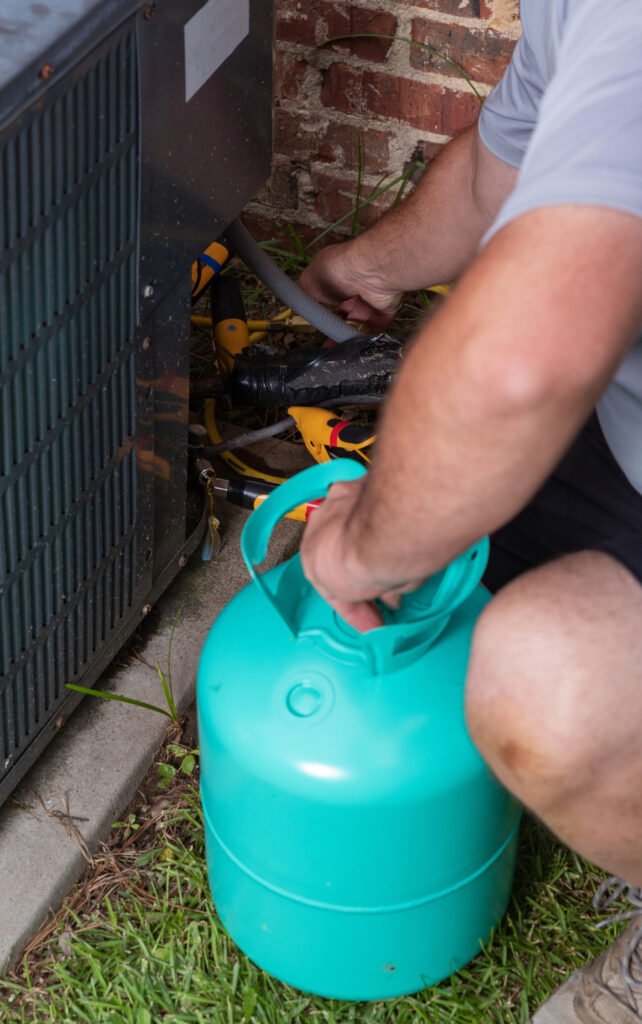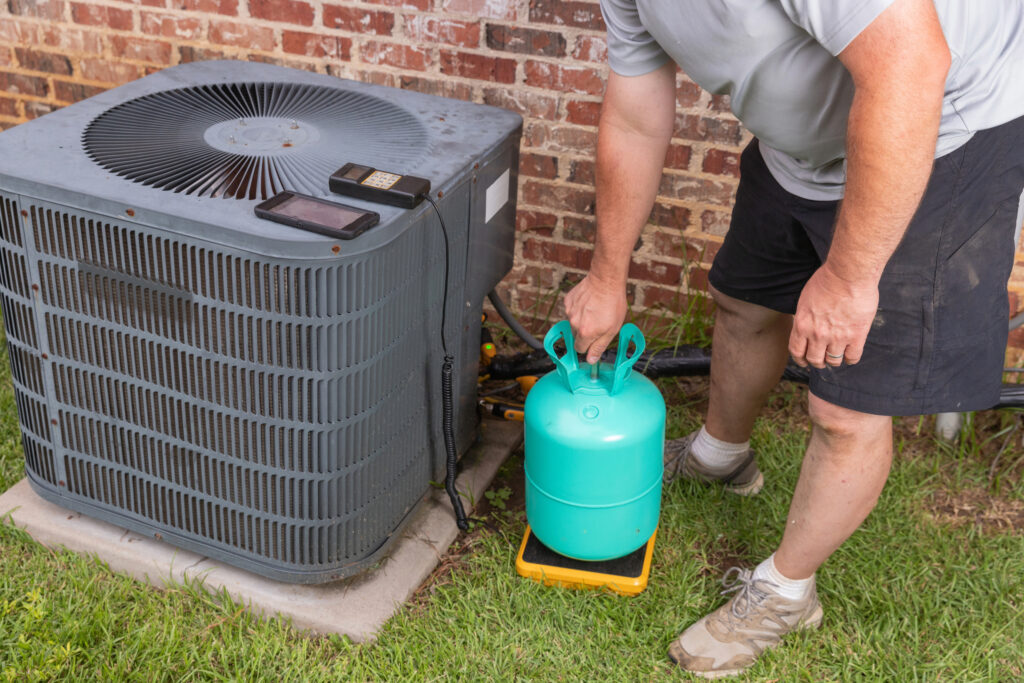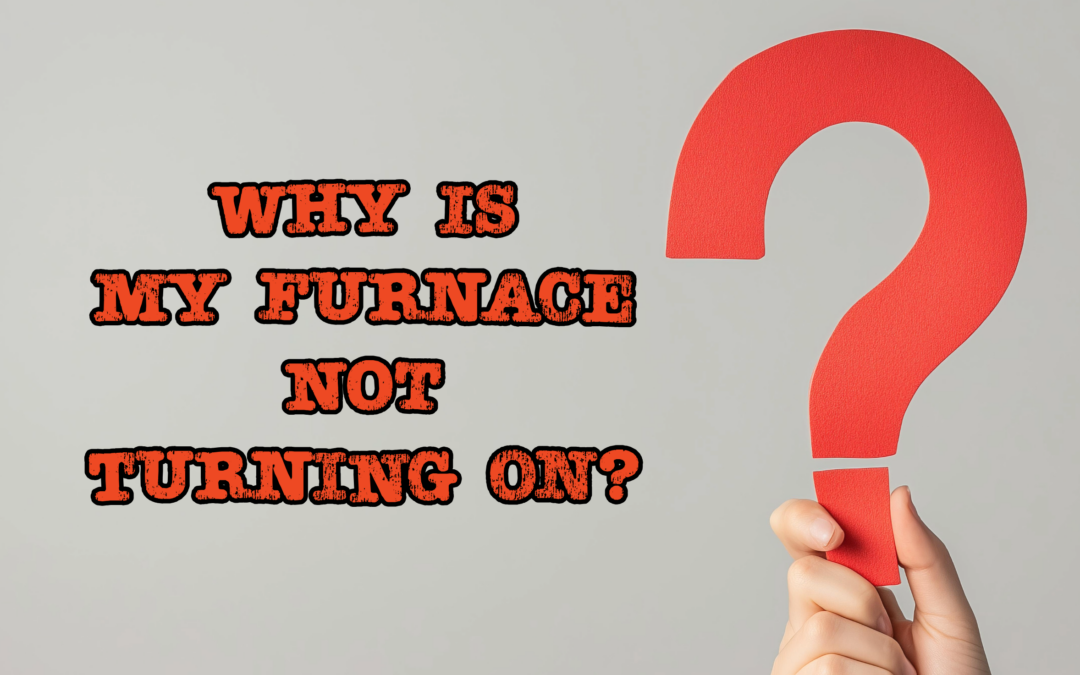As concerns about climate change and environmental sustainability take center stage, industries across the globe are reevaluating their operational strategies to align with more stringent environmental standards. In the HVAC industry, the focus has turned to refrigerants, with particular attention on R-410A. Understanding the potential phase-out of this refrigerant is essential, as it will help you to understand what to expect as a homeowner.

The Importance of Refrigerants in HVAC Systems
Refrigerants are vital components in air conditioning and heat pump systems, responsible for the absorption and release of heat, which assists in cooling or heating spaces. The HVAC industry has experienced a progression in refrigerants, with each new generation striving to optimize efficiency while minimizing environmental impact.
R-410A, a type of hydrofluorocarbon (HFC), emerged as a more eco-friendly alternative to older chlorofluorocarbon (CFC) and hydrochlorofluorocarbon (HCFC) refrigerants known to harm the ozone layer. However, despite its zero ozone depletion potential, R-410A’s high global warming potential (GWP) has prompted regulatory bodies to consider its phase-out.
The Drive Toward Eco-Friendly Refrigerants
The move to phase out R-410A and other HFCs is primarily driven by international agreements and regulatory efforts to curtail greenhouse gas emissions. The Kigali Amendment to the Montreal Protocol, adopted in 2016, is one such initiative that aims to phase down HFC usage. Developed countries, including the United States and several European regions, have targets to reduce these refrigerants to 15%-25% of baseline levels by the mid-2030s.
The Projected Timeline for R-410A
While it is clear that R-410A will eventually be phased out, the exact timing of when it will be discontinued remains a key issue. There is no absolute ban planned for 2025, but steps are already underway to diminish its use:
- Regulatory Actions: Numerous countries have begun imposing stricter regulations regarding the manufacture and import of R-410A. For example, the European Union has set forth timelines under its F-Gas Regulation, and the Environmental Protection Agency (EPA) in the United States has introduced phasedown plans.
- Industry Innovation: The HVAC industry is rapidly innovating to comply with these regulations, exploring alternative refrigerants with lower GWPs. Refrigerants such as R-32, R-454B, and R-466A are becoming popular replacements in newer systems.
- Market Dynamics: As regulations develop, manufacturers are shifting to these newer refrigerants. This shift drives a market transformation, prioritizing the production and retrofitting of systems compatible with low-GWP refrigerants.
Alternatives to R-410A
- R-32: This refrigerant offers twice the energy efficiency of R-410A with half the GWP. It is gaining adoption in many new systems, especially in regions with rigorous climate policies.
- R-454B: Known for its balanced properties, R-454B provides a notably lower GWP and operates under similar pressure levels, easing the transition for manufacturers and users.
- R-466A (Solstice N41): Recognized for its safety and efficiency, R-466A is another strong contender. Non-flammable in its pure state, it offers a safety advantage over some alternatives.
The Effects of a Phase-Out
For Manufacturers
Manufacturers are pivotal in this transition, needing to invest significantly in research and development to create and produce systems using eco-friendly refrigerants. This requirement involves adapting production lines to accommodate newer technologies.
For Consumers
The phase-out may have both immediate and future impacts on consumers. In the near term, there might be increased costs for systems and services as the market adjusts to newer technologies. However, over time, enhanced efficiency and reduced energy costs from better-performing refrigerants could lower utility bills for consumers.
For the Environment
Shifting away from high-GWP refrigerants like R-410A is anticipated to benefit the environment positively. By adopting solutions with reduced environmental impacts, the HVAC industry reinforces its commitment to fighting climate change, aligning with global goals of lowering greenhouse gas emissions.

As the HVAC industry continues adapting to environmental pressures, the phase-out of R-410A signifies a meaningful shift toward sustainable practices. Although 2025 is not the definitive cut-off, efforts to reduce R-410A usage reflect New Albany Heating & Cooling‘s commitment to aligning with broader environmental objectives and creating a healthier planet for future generations.
We are here for you; if you have any more questions about your HVAC system’s refrigerant or suspect your own system is due for a refrigerant refill, also known as a “recharge,” please don’t hesitate to contact us.
Reach out to New Albany Heating & Cooling today at (614) 636-5002, or schedule an appointment online now by clicking here!
More HVAC Refrigerant Information
Our goal is always to keep you informed as best as we can. Learn more about the role of HVAC refrigerants and their role here!






